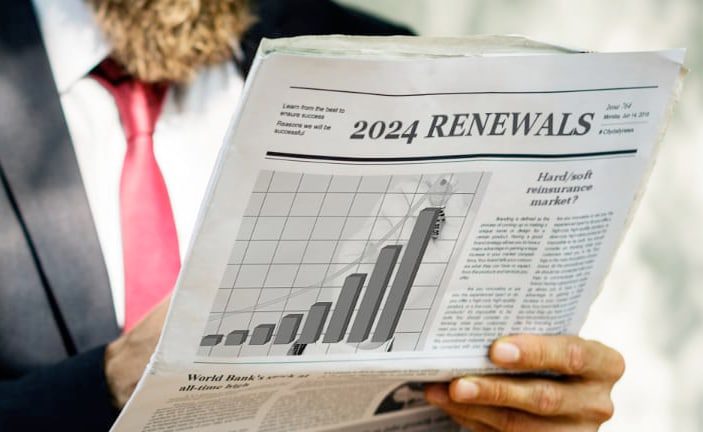Property cat renewal rates flat to up 30%, retro capital less of a constraint: GC

Property catastrophe reinsurance renewals saw another wide range of outcomes even in a more orderly market, as capacity providers still demanded steep increases for programs that had been loss-affected during the last year, with global property cat rates seen as ranging from flat to up by 30%.
This is according to reinsurance broker Guy Carpenter, who said that pricing pressure was greatest towards the lower-end of property cat reinsurance programs at these renewals.
Overall, the property reinsurance renewals saw a bit of a bounce back in terms of capacity, with more appetite also being seen.
However, this was outside of the still-troubled frequency exposed layers and loss-affected layers of reinsurance towers, suggesting the market remains one where there are gaps in protection, or at least cedents are unable to buy what they had become accustomed to just a few years ago.
Guy Carpenter said that outside of those frequency exposed and heavily loss-impacted areas of property reinsurance towers, the market saw a meaningful capacity bounce-back, including on new business, where reinsurer activity “increased measurably.”
Global property catastrophe reinsurance rates settled in a wide range at the January 1st 2024 renewals, the broker said.
Risk-adjusted rate changes were largely near-flat to single-digits across the market’s non-loss impacted aproperty cat programs.
But, for the loss-impacted catastrophe reinsurance programs, renewal rates continued to rise, with an average of +10% to as much as +30% seen.
However, there was a wide range of outcomes around those averages, Guy Carpenter explained, with differentiation still a factor, we understand.
Pricing pressure was greatest at the lower-layers of programs, the broker said, while any risk-adjusted decreases that were seen appeared near the upper portion of catastrophe reinsurance programs, which Guy Carpenter said reflected “the adequacy of minimum rates-on-line and sufficient capacity.”
Overall, reinsurance markets “remain sensitive to pricing, attachment point and overall structure adequacy,” the broker went on to explain.
While terms and conditions were largely seen to be stable, it appears, as Guy Carpenter said they were “borne out of the demonstrable corrections made throughout 2023.”
In the retrocession market, a far more stable situation has emerged for the January 2024 reinsurance renewals than a year ago, it now appears.
Guy Carpenter said that retrocessional reinsurance capacity was “available” at the renewals and as a result did not prove such a constraint to reinsurers risk appetites, which the broker said was in “sharp contrast” to this time last year.
Retrocession pricing saw some improvements in the mid to upper layers, the broker said, which mirrors our own findings from earlier this week.
At the same time, Guy Carpenter explained that retro retention levels have largely held steady at the renewals, despite there being growth in underlying retro cedent portfolios.
That’s potentially one of the most positive outcomes for the retro renewals, that reinsurers who grew their exposure through the hard market have been able to keep attachments relatively steady, which with more stable pricing could mean an improved economic outcome for many retro buyers for 2024.
In addition, terms on retrocession renewals were seen to be more consistent with contracts, which suggests further settling of this important end of the marketplace.
Given the continued improvement in rates across parts of the catastrophe reinsurance renewals and the fact reinsurers and retrocessionaires continue to be able to charge loss-impacted programs more, it suggests a continued improvement in how portfolios will earn-out through the next year, suggesting a strong base to begin 2024.
Guy Carpenter said that, “2023 is shaping up to be profitable for reinsurers, reflecting the degree of market correction and patterns of loss activity.
“Return on capital is exceeding reinsurers’ cost of capital, as projected average returns are nearing 20%.”
While the price pressure in upper-layers will have the effect of bringing down returns somewhat in those areas, which includes much of the catastrophe bond market, the rest of the market remains firm and that should hold up reinsurance and ILS fund returns over the coming year.
The question, further out, will be whether resolve can be sustained and (as we’ve said many times) a higher base-line on pricing of catastrophe risks be maintained.
Read all of our reinsurance renewals coverage here.






